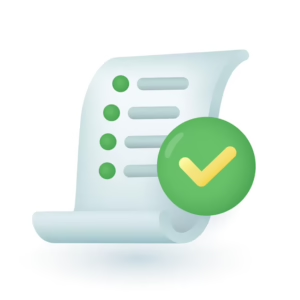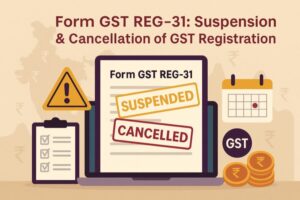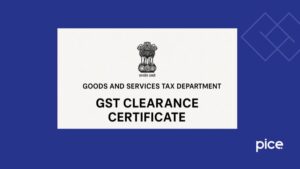How To Deduct TDS On GST Bill In 2025? A Complete Guide
- 17 Oct 25
- 10 mins
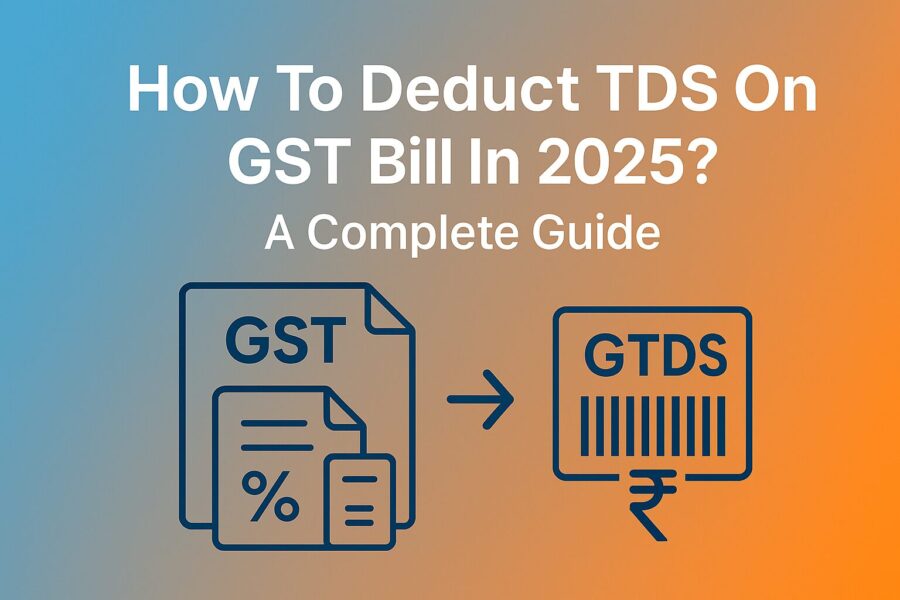
How To Deduct TDS On GST Bill In 2025? A Complete Guide
Key Takeaways
- TDS under GST requires authorised deductors to withhold 2% tax on contract values exceeding ₹2.5 lakh.
- It applies to payments made by government departments, agencies, and local authorities for taxable supplies.
- Deductors must deposit TDS via the GST portal and file GSTR-7 by the 10th of the following month.
- Suppliers can claim TDS credit once it reflects in their electronic cash ledger.
- Using billing and accounting software helps automate TDS calculation, filing, and compliance effortlessly.
Understanding how to deduct TDS on a GST bill is essential for businesses to stay compliant with India’s evolving tax regulations. Under the Goods and Services Tax (GST) regime, TDS functions differently from traditional income tax deductions. It involves deducting a small percentage of tax when making payments to suppliers for certain goods or services.
This amount must be deposited with the government and reported through a proper tax return. Correctly handling TDS ensures smoother tax compliance, reduces the risk of tax evasion, and enables suppliers to claim credits efficiently.
This guide explains how to deduct TDS on a GST bill, applicable rates, and the responsibilities of authorised deductors in 2025 as per current Income Tax laws and GST provisions.
What is TDS on a GST Bill?
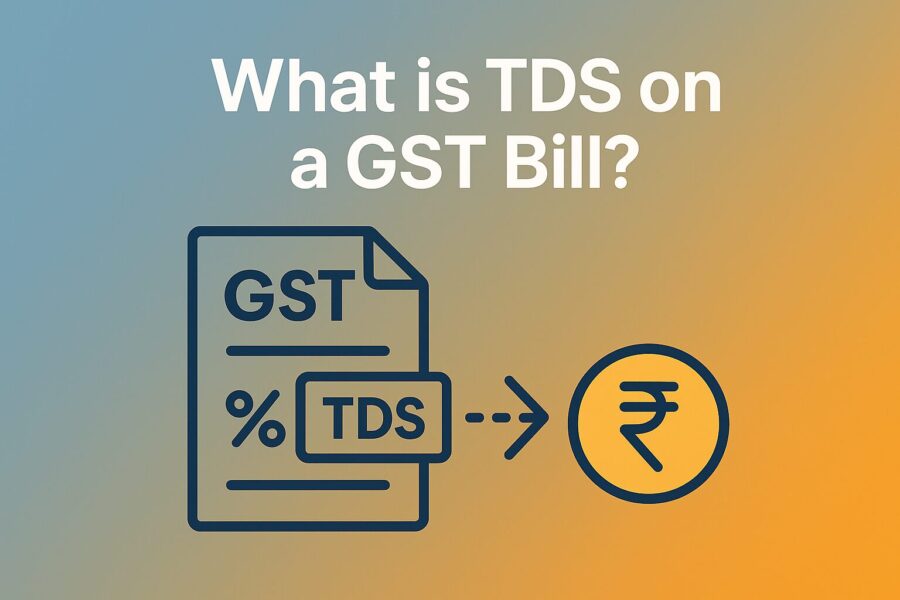
TDS or Tax Deducted at Source is one of the ways to collect Goods and Service Tax from buyers of certain goods or services. The TDS amount depends on a certain percentage that buyers pay on the amount payable for purchasing those goods or services. It is a tax deducted by a specific category of taxpayers when they make payments to suppliers for taxable goods or services.
The amount they collect is a significant source of revenue for our Indian Government and taxation system. However, TDS under GST is applicable only when the total supplies in a single contract exceed a value of ₹2.5 lakhs. This threshold limit is for a single contract and not for aggregate supplies.
Who are The Authorised People Responsible for Deducting TDS on GST?
According to the GST Regime, certain authorised individuals have a responsibility to deduct TDS on GST from taxpayers when making payments to suppliers. However, they can only do this if a contract value exceeds ₹2.5 lakhs. Some of these authorised individuals are:
- An Establishment or a Department of the Central Government or the State Government
- This means all government departments or establishments, whether it is the Central Government or the State, must comply with TDS deduction rules under GST and the Income Tax Act.
- Government Agencies
- All government agencies in India, operating under either the Central or State Government, must ensure compliance with TDS rules under both GST and Income Tax laws.
- Local Authorities
- Municipal corporations, panchayats, and other local bodies across India are also required to deduct TDS on GST when making payments for goods or services.
- Notified People or Categories
- The Government may designate specific persons or categories required to deduct TDS on GST, as notified under applicable provisions.
Rate of TDS on GST in 2025
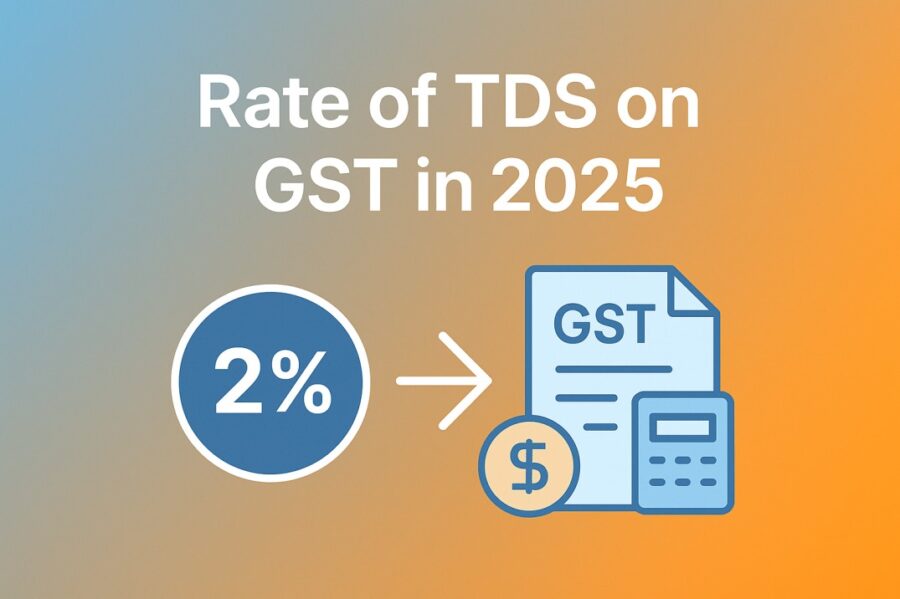
Under the Goods and Services Tax, the Indian Government charges 2% TDS on the value of the contract payable to a supplier of taxable goods and services. This rate is applicable only if the contract value exceeds ₹2.5 lakhs. This 2% deduction applies to both CGST and SGST, each sharing 1%.
Here is a simpler way to understand:
- Intra-state supplies (within the same state):
- 1% for SGST
- 1% for CGST
- Interstate transactions:
- 2% on IGST
However, if the supply goes beyond a state and becomes an interstate transaction, 2% TDS will apply on IGST.
Steps To Deduct GST on TDS Bill
Authorised people who are responsible for deducting TDS under the Goods and Services Tax must follow these steps to ensure smooth processing:
Verify Your Contract Value
TDS on GST is only applicable if the contract value exceeds more than ₹2.5 lakhs. Hence, before making any payment, make sure its value exceeds ₹2.5 lakhs.
Check Your Supplier’s GST Registration
A GST-registered enterprise will offer an invoice with clear mentions of your IRN and their GSTIN number. You can verify their GST registration with the help of your phone by entering their GSTIN. This safeguards you from potential scams.
Calculate TDS Payable on Taxable Amount
Authorised people can only collect TDS on the taxable value of supplies. This means if a supplier creates a bill of ₹4 lakhs where its taxable amount is ₹3 lakhs, then the TDS deduction will be,
For Supplies Within a State (2% TDS, 1% for CGST and SGST both)
- CGST = 1% CGST on ₹3,00,000 = ₹3000
- SGST = 1% SGST on ₹3,00,000 = ₹3000
Hence, CGST +SGST equals to ₹6000 TDS for a contract of ₹3lakhs
However, the same thing but for inter-state supplies will be 2% TDS on 2% IGST,
Which is, 2% TDS on ₹3 lakhs worth of supplies equals ₹6000 TDS.
Deduction and Deposit of TDS Money to the Government.
Once a taxpayer verifies their TDS amount payable, they must pay their taxes. The supplier collects all these taxes for some time and then deposits the deducted amount via the GST Portal within their due date.
File A TDS Return
It is mandatory for people who are deducting TDS to file GSTR-7 returns. They must do it within the 10th day of the following month after deduction, where they will provide details regarding TDS. Additionally, Suppliers are eligible to claim credit for deducted TDS, once it reflects in their electronic cash ledger. This step ensures proper tax compliance and reflects credit in the supplier’s electronic cash ledger.
Issue Your TDS Certificate
Once you file your GSTR-7 returns, you can generate and issue Form GSTR-7A to your supplier within five days from filing day. This Form acts as a certificate of TDS.
Common Mistakes to Avoid While Deducting TDS on GST Bill
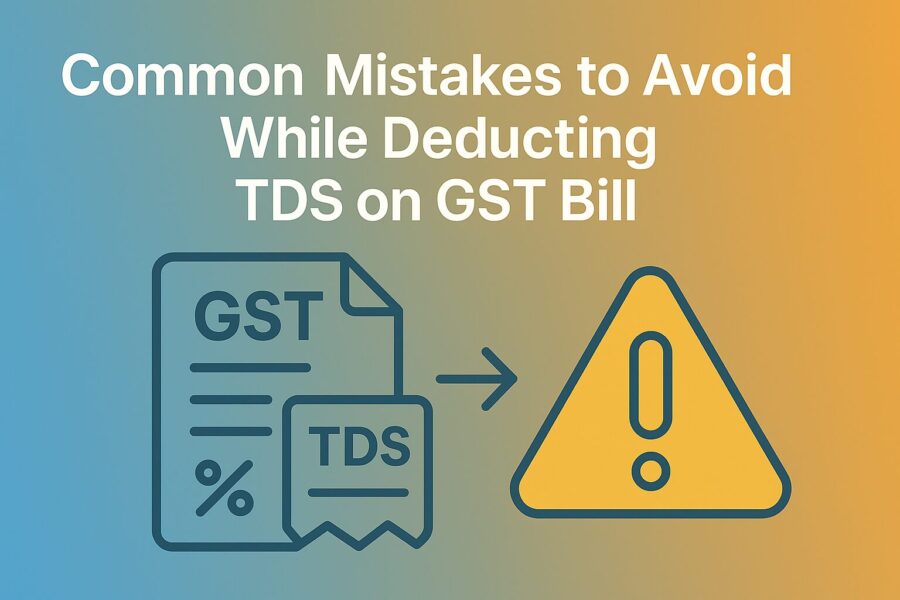
Many businesses make common calculations or other mistakes in the process of TDS deduction, and then spend a lot of time finding the errors. Well, here are some tips you must follow to reduce these common errors, ensure accuracy and avoid tax evasion issues:
- You must always deduct your TDS from the taxable amount of your invoice. Invoice value is not always your taxable amount.
- Keep due dates in mind, set alarms and try to file them within time to avoid penalties.
- You might face problems if you do not file the GSTR-7A or TDS certificate with your supplier.
- Make sure to verify if your trade is within one state’s boundaries or if it is an interstate trade. As they have different GST rates.
How Billing and Accounting Software Can Help?
Many businesses these days use billing and accounting software to simplify tax processing for common people. It helps to foster efficiency, both in speed and quality. One of the services of this software includes TDS deduction. Here are some ways these tools can help you in your taxation journey.
Automating Calculation of TDS Payable
Billing software can automatically calculate your TDS payable within seconds. This helps to increase efficiency and reduces the chances of mistakes and consumes less time.
Generating GST-Compliant Invoices
If you are using proper software that is reliable. They most probably ensure that the invoices that they create comply with GST regulations. This software can also create invoices with TDS applicability on GST payable.
Streamlined GSTR-7 Filing
Integrated software used by many businesses is trustworthy. You can use any one of these accounting software programs for your business to directly file GSTR-7. This will cut down the process of manual filing of returns and reduce the time and cost you used to spend on paperwork.
Timely Reminders Regarding TDS Payment
Some systems are well integrated and optimised to send alert messages before your due date for filings arrives. This can greatly boost your GST compliance and save you from hefty fines and penalties. These reminders can arrive a few days before your due date so that you can schedule your work at your convenience and take out some time for timely filing.
Issuing GSTR-7A or TDS Certificates
A taxpayer needs to file GSTR-7A, which is a certificate of TDS payment. Some software offers features such as generating GSTR-7A filings. You can use them to seamlessly file your TDS certificate for the supplier.
Easy Accounting Process
You can use cloud-based accounting and GST billing software to simplify your tax-related purposes. A software like this with a good user-friendly interface can automatically file reports, do your financial management, timely file your returns make your TDS deductions for you without any mistakes.
Conclusion
You need to understand how to deduct TDS from your GST bill. However, it is more important to know when and who can deduct a taxpayer's TDS under the Goods and Services Tax system. TDS applies only when the contract’s value exceeds ₹2.5 lakhs.
Make sure to file your tax return and pay the TDS amount on time. This prevents fines and ensures alignment with both Income Tax laws and GST provisions. Just like many growing businesses, consider using reliable billing and accounting software to avoid mistakes, improve accuracy, and maintain overall tax compliance with both GST and the Income Tax Act.
💡If you want to streamline your payment and make GST payments via credit, debit card or UPI, consider using the PICE App. Explore the PICE App today and take your business to new heights.
 By
By 






